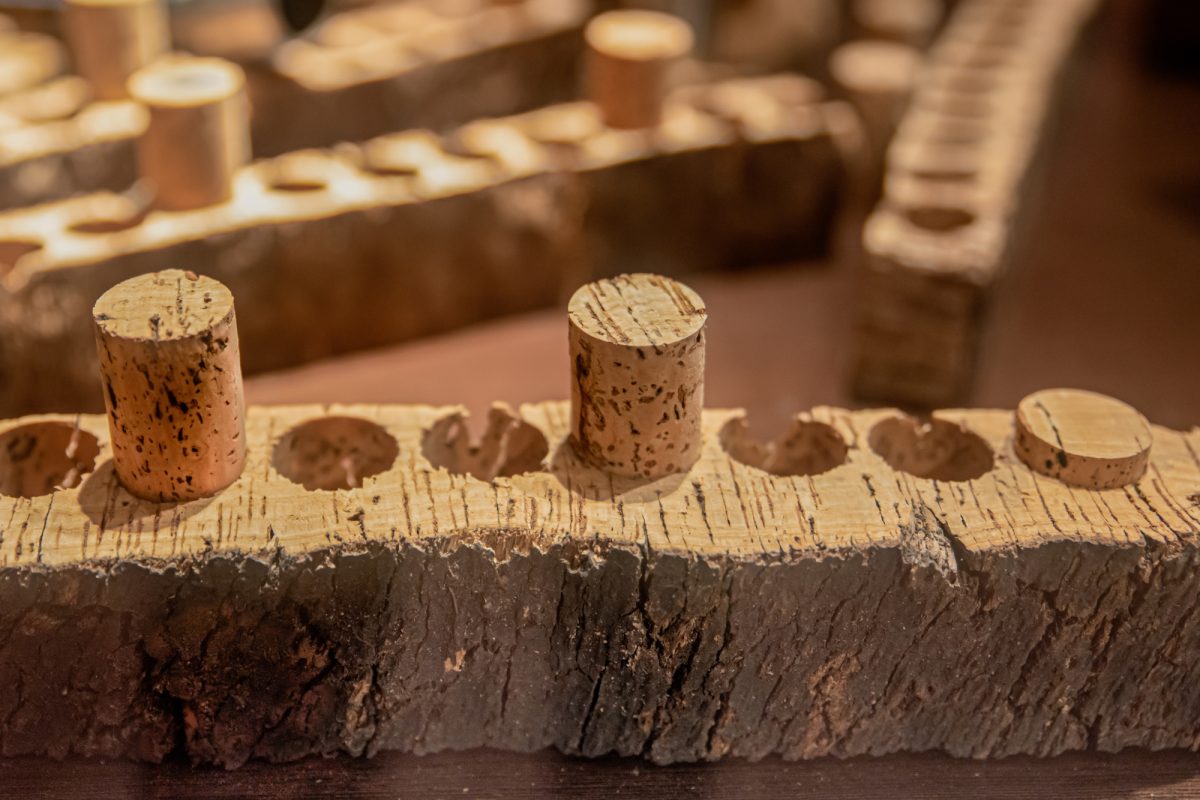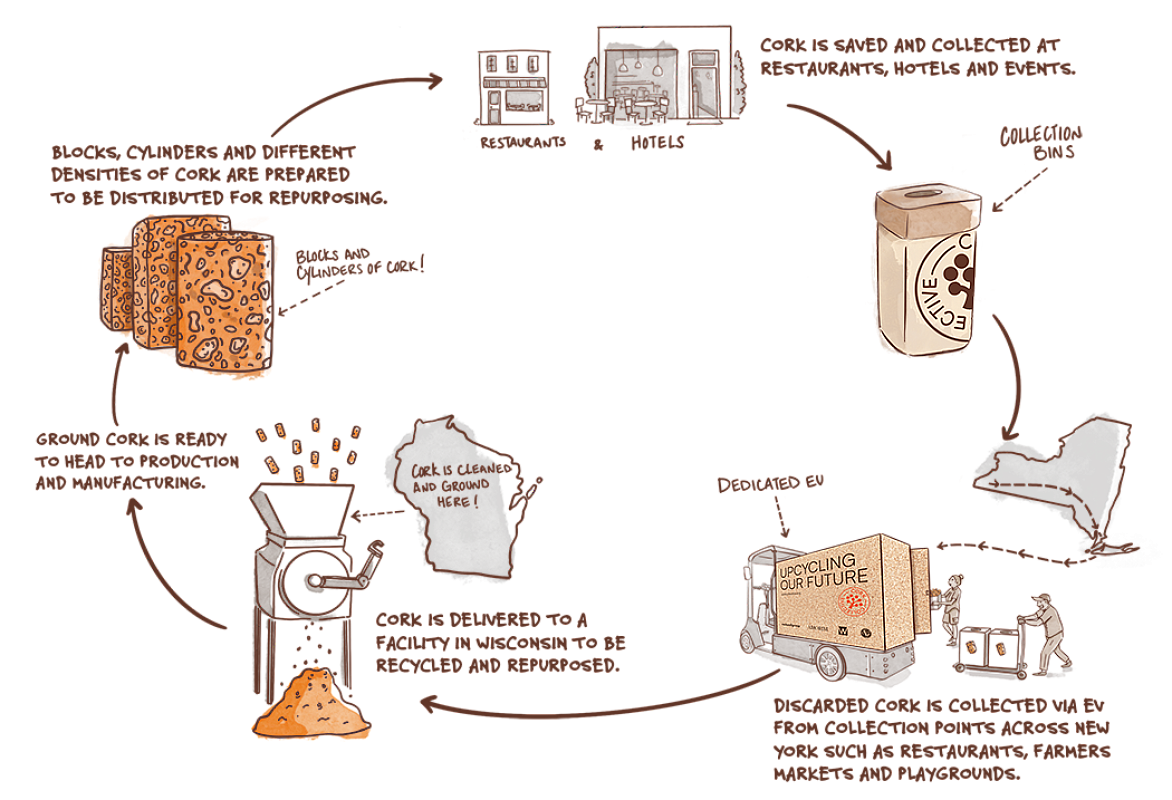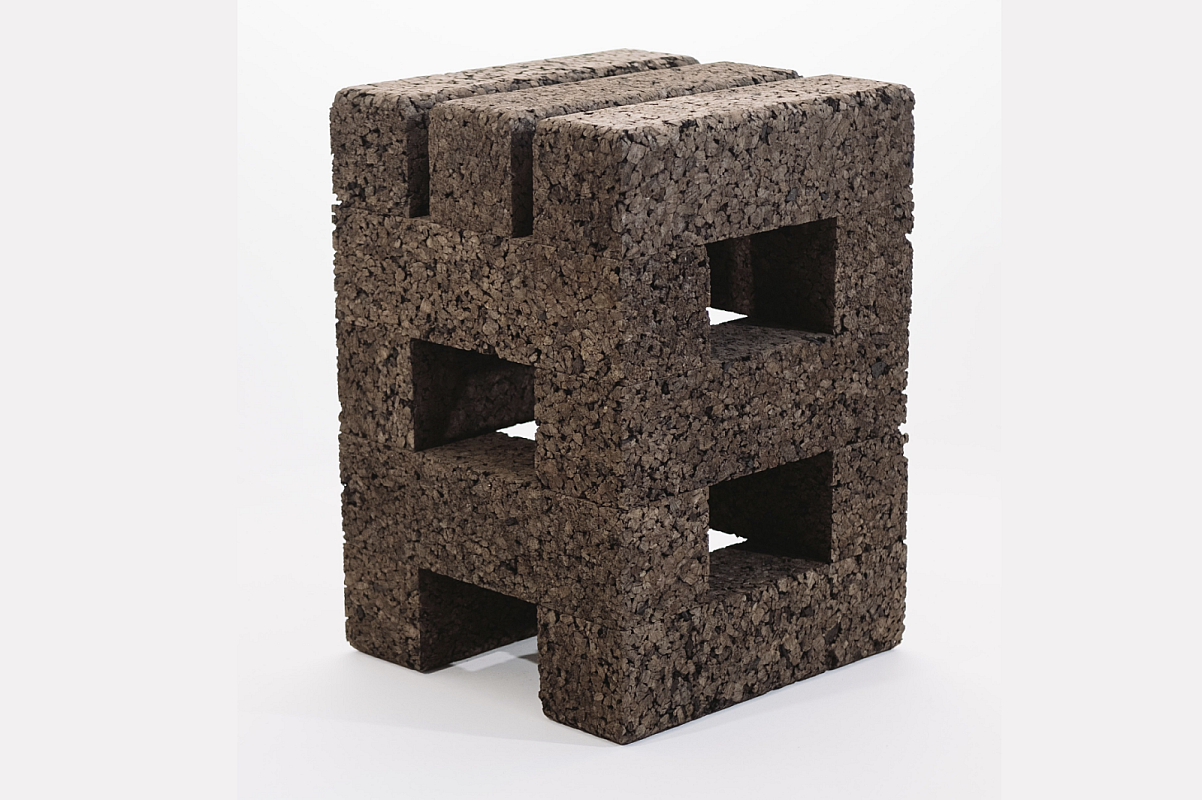A biogenic and regenerative material, cork is breathable, light-weight, buoyant, fire retardant, and thermally insulating. It is carbon-negative and can be used in a variety of material applications such as flooring and insulation.
Cork, otherwise known as the bark of the Quercus suber oak tree, can be harvested without harming the tree. This truly regenerative material is harvested every nine years after the first period of growth. The largest forests of Quercus suber are found in Portugal. The cork tree can live 250 years and act as a carbon sink. Every ton of cork can sequester 73 tons of carbon dioxide.
While most commonly associated with wine stoppers, cork has various applications. It is used as a building material in insulation, wall coverings, furniture, resilient flooring, and other consumer products.

Cork tree, Adobe Stock

Cork bark in Portugal, photographed by Daniel Michalik

Thermacork in Parsons Rooms, designed and installed by HML

Thermacork in Parsons Rooms, designed and installed by HML
Cork is a supermaterial.
Cork’s interior structure is porous, making it highly breathable, lightweight, and buoyant. It is impermeable to liquids and gases, naturally fire retardant, elastic, compressible, hypoallergenic, shock absorbent, acoustically insulating, and thermally insulating. Made of suberin, lignin, and cellulose, cork is fully biodegradable when not combined with synthetic additives.

Interior structure of cork, Adobe Stock
Wine bottle stoppers are harvested directly from cork bark. The cork leftover from this production will be ground up and reprocessed for other applications.
The prominent challenge cork faces is the use of synthetic binders. When cork is recycled, it is ground up and remixed with a binder, typically made from polyurethane. This small percentage undermines the material’s sustainability and health. We look for cork materials that use bio-based binders or only heat/pressure and the material’s natural suberin content to reform the cork into new products. When sourcing products from cork, inquire about the binder ingredients and percentage of the product.

Cork wine stopper production, Adobe Stock
After wine corks are used, they are discarded and often end up in landfills due to a lack of recycling systems. In the US, 2.9 billion corks are discarded each year, and only 1% of them are recycled. Collecting Cork is a Rockwell Group, Amorim, Bluewell, and Southern Glazer’s Wine and Spirits initiative to repurpose wine corks into products. The NY Cork Collection Program is an initiative to partner with local restaurants and hospitality venues to collect corks for upcycling. At the moment, these materials are transformed into playground surfaces and flooring at a facility in Wisconsin.

Collecting Cork process diagram
Another initiative from Rockwell Group is LAB, a studio within the firm focusing on experiential design, directed by Dan Marino. They developed Casa Cork for Milan Design Week, a traveling installation that showcased the many interior uses of the material, from tiles to furniture. Visitors could experience cork’s versatility as one of the world’s most sustainable natural materials, through demonstrations, product showcases, a student design competition, and conversations with leading thinkers.

Casa Cork, design and image by LAB and Rockwell Group
The Cork House, designed by Oliver Wilton, Mattew Barnett Howland, and Dido Milne, shows how cork can be used in load-bearing architecture. Built in 2019 in the UK, the walls and roof pyramids are made from solid load-bearing cork. The 1,268 cork blocks are joined without mortar and glue. They lock in place as a structural system and can be disassembled and reclaimed for further reuse.

The Cork House, by Matthew Barnett Howland with Dido Milne and Oliver Wilton

The Cork House, by Matthew Barnett Howland with Dido Milne and Oliver Wilton
Daniel Michalik is Assistant Dean at Parsons School of Constructed Environments and a NY-based designer whose studio primarily uses cork as a raw material. His furniture pushes the material into unique forms, experimenting with what cork can be. He has designed a GOOGLE showroom with Reddymade and partnered with AMORIM Corticeira in Portugal to teach classes around cork’s potential.

Mozelos Stool, 2012, by Dan Michalik
Manufacturer Amorim Cork pushes the boundaries of cork by innovating materials for aerospace, construction, automobiles, electrical engineering, and sports. They optimize cork’s unique characteristics such as lightness, shock absorption, and anti-vibration.
To learn more about cork, join us for the upcoming event Field to Form: Cork on April 28th, organized in collaboration with the Architectural League of N.Y. Register here.
Read More
Join Our Academic Network
Get Access to our carefully researched and curated academic resources, including model syllabi and webinars. An email from an academic institution or a .edu email address is required. If your academic institution does not use .edu email addresses but you would like to join the network, please contact healthymaterialslab@newschool.edu.
Already have an account? Log in